When River Ganga Flows by Europe
![]()
Upstream along the quiet banks of the Ganga, not far from the bustle of Calcutta, lies a string of towns, where a slice of Europe came to roost long before the British did. Starting from Serampore, 40 kilometres north of the city, where the Danish founded a trading outpost in 1755 to Bandel, which was a Portuguese territory in the early 17th century. Between them is Chandannagar, a charming little town, where the French had governed until 1951 and Chinsurah, where the Dutch seafarers had their trading outpost for more than 200 years. The four towns have retained traces of a mothballed European heritage in their architecture and culture.
The Danish Den
The first pit stop on this stretch of the Hooghly river would have to be Serampore, which was a colony of the Danish East India company from 1755-1845. The riverside settlement had developed into a centre of education, linguistics and publishing in the early 19th century. The historic town square had housed the Governor’s House and other magnificent buildings built in neo-classical architectural style – picturesque white mansions with expansive porticoes to the south, and the windows closed by Venetian blinds painted green. These were mostly demolished by the British when the Danes were compelled to hand over the town to them in 1845 for a paltry sum of Rs. 1.2 million.
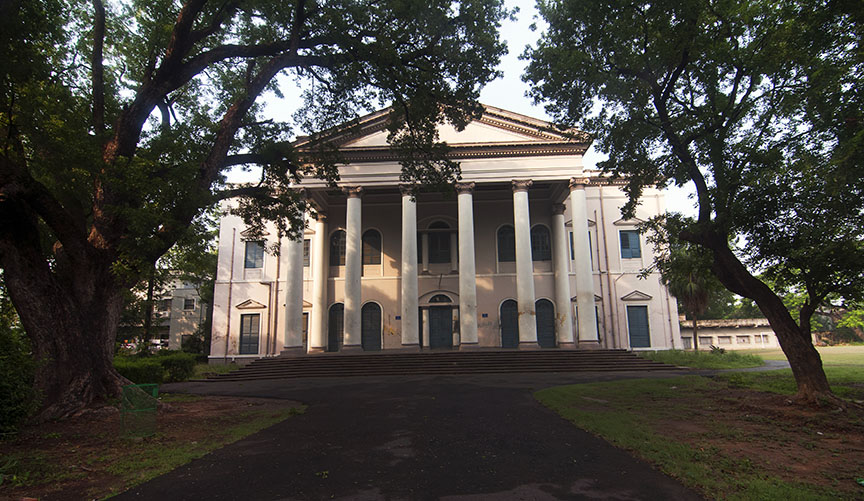
A leafy riverside promenade stretches for a couple of kilometres till a majestic edifice looms out of nowhere around a sharp corner, its grand colonnaded facade standing a little back from the road amid a sprawling lush green compound, in solitary grandeur. This is Serampore College. Founded in 1818 by Christian Baptist missionaries William Carey, William Ward and Joshua Marshman (famous as the Serampore Trio), this is the second oldest college in India and by a Royal Danish Charter granted by King Frederick VI during the Danish rule, it continues to enjoy the privilege of conferring its own degrees in Theology.
Nearby, St Olav’s Church is the town’s most visible landmark. The Danish Lutheran Church with a double-columned portico and bell tower was constructed in 1805 with donations from Kolkata and Copenhagen.
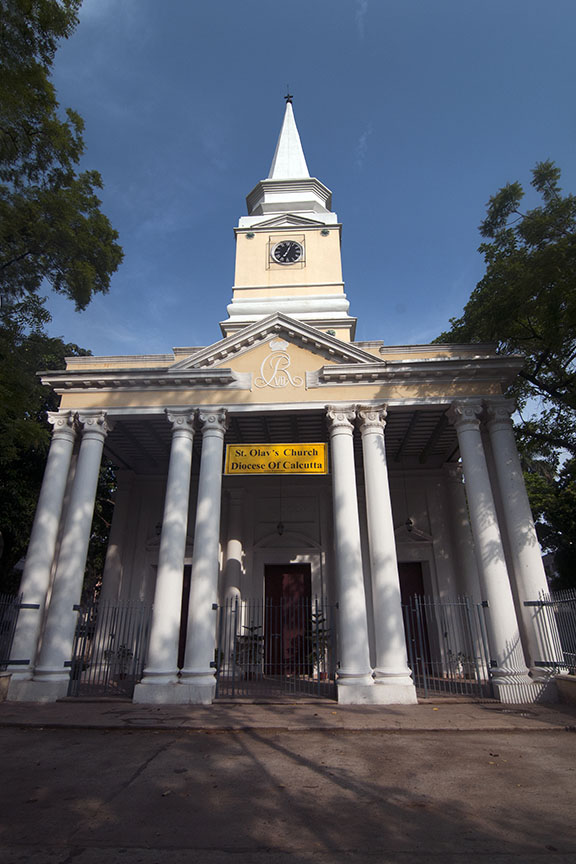
Portuguese Pioneers
The Portuguese were the first to arrive on the eastern shores of India in the last decades of the 16th century and as the pepper trade flourished, they created a settlement at Hooghly near Saptagram, a flourishing port town. The earliest settlers were a band of buccaneers and they were soon driven away from there. They set up their base at Bandel, 55 kilometres north of Kolkata. Though nothing much has remained of the Portuguese stronghold, their legacy is still evident in the Augustinian friary, which was constructed in 1599. The church has been renovated many times over and now appears in an uninspiring, modernist avatar, but the Sunday chimes of the church bell still draw a large crowd from the town and surrounding villages, whose forefathers had been converted to Christianity by Portuguese missionaries.
Going Dutch
About six kilometres downstream from Bandel lies Chinsurah. The Dutch arrived a decade after the Portuguese and created a trading post dealing in saltpetre, spices, cotton and indigo at Chinsurah, which lasted for more than two centuries (1610-1825).
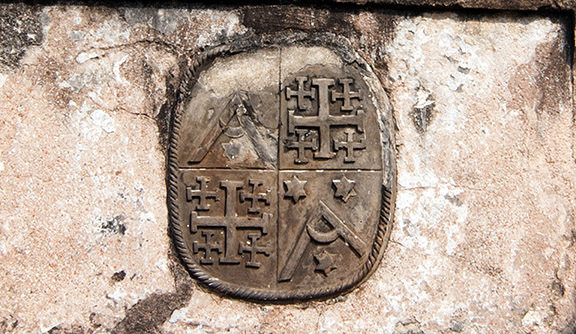
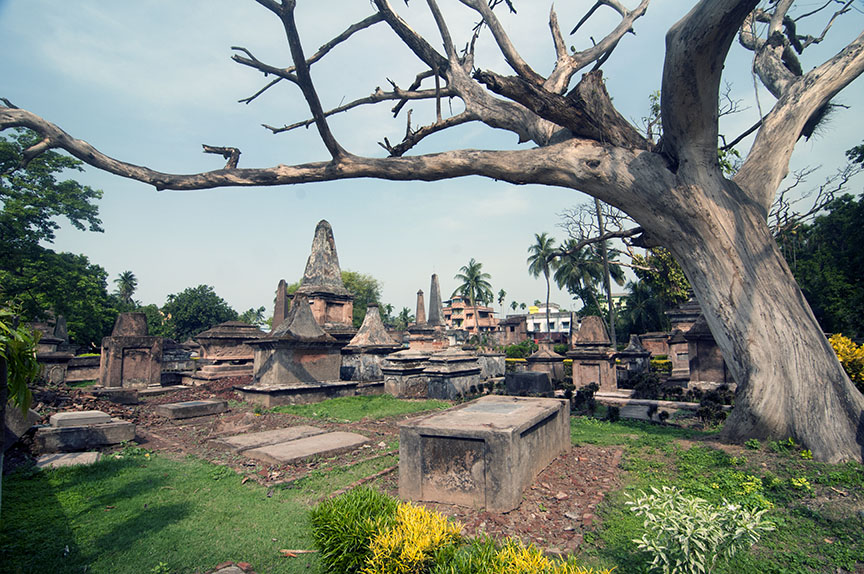
As a hub between the Western trade capital Amsterdam and its Eastern counterpart in Batavia, Chinsurah occupied a key position of the sprawling Dutch empire. In his book The Dutch East India Company in India, Dutch historian Bauke van der Pol wrote of mansions with pleasure gardens and ornate steps leading to the river. As you walk through the labyrinthine alleys of Chinsurah, traces of that built heritage can be found in the exquisite Indo-Dutch architecture of the palatial mansions that dot the townscape. One of them is Baro Seal Bari (Seal’s Mansion) – a majestic mansion built in 1763 by Nilambar Seal, a rich and influential merchant of Chinsurah. The imposing ionic columns hold up the semi-circular balconies, while thin fluted columns with Corinthian capitals support the arches of the thakurdalan (open hall of worship). A few hundred metres from the 256-year old Seal Mansion, a deserted alley leads to the verdant, impeccably maintained Dutch cemetery, in use till the mid-19th century when the Dutch ceded Chinsurah to the British. Some of the oldest tombstones of the cemetery contain the Dutch Coat of Arms.
The finest example of Indo-Dutch architectural fusion lies just outside Chinsurah town, on a field that slopes down from the Grand Trunk Road – the beautiful mausoleum of Susanna Anna Maria. A Dutch beauty of the early 18th century, Susanna is believed to have had seven husbands (though historical records vouch for only two) and also the inspiration behind Ruskin Bond’s famous novel Susanna’s Seven Husbands. Surmounted by a dome with a steeple, the tomb partly looks like a temple, and the meticulous proportions have made it a fine piece of art.
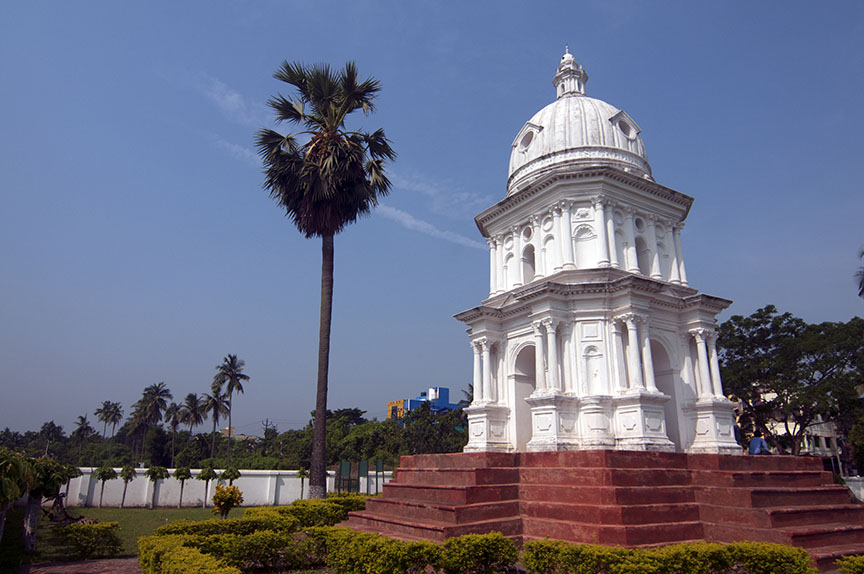
The French Liaison
Further downriver, the town of Chandannagar was established by the French at the end of the 17th century and led to the town becoming famous for its quaint neighbourhoods, teeming with Gallic pubs. That legacy is still evidenced by the Chandannagore Strand, which runs alongside the Ganga. This beautiful boulevard is home to elegant pastel facades of French-era buildings. The erstwhile French Governor’s residence has now been converted to Institut de Chandannagar that houses a museum and an institute of French studies and a beautiful 19th-century French villa now operates as the Chandannagar court. Just in front of the museum, stands the Patal Bari (The Underground House, so named because its lowest floor is submerged in the river), a stately mansion with beautiful wooden sunshades and decorative water outlets. An 18th-century zamindar house, Patal Bari has a long file of distinguished visitors including Rabindranath Tagore. The Nobel Laureate poet visited this house often in his early years and mentioned its aesthetic architecture in his writings. Just off the Strand, the late 19th-century Sacred Heart Church stands in stolid white splendour, a statue of St. Peter guarding its entrance. The beautiful altar lights and a church bell that had been imported from France together with the beautiful stained-glass windows make this one of the prettiest churches in West Bengal.
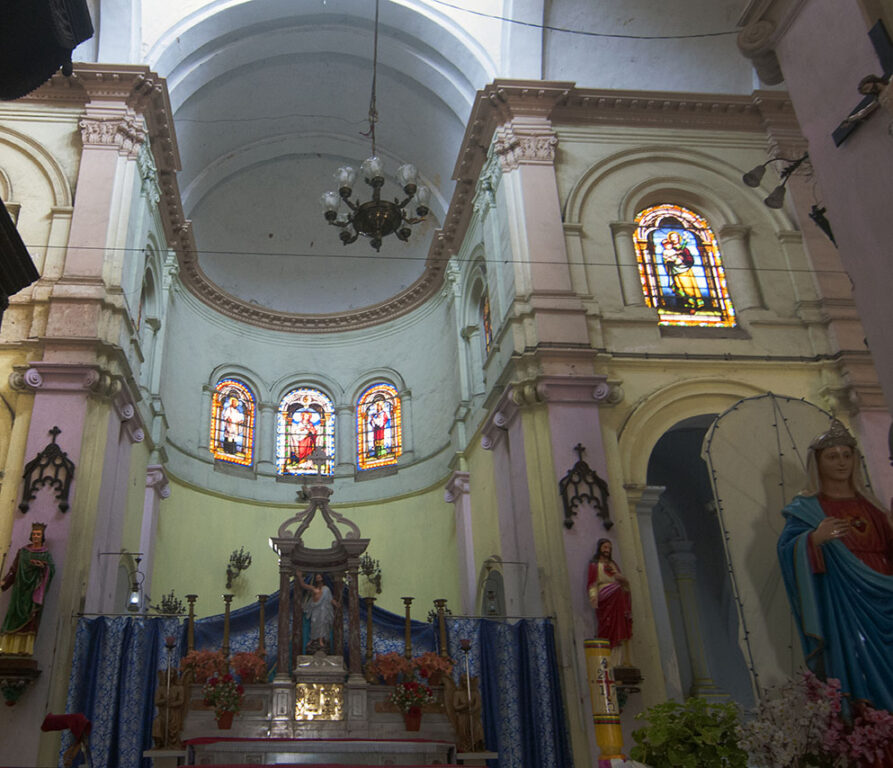
However, the structure that dominates the urban landscape of Chandannagar is a peach-coloured riverside pavilion, its architecture loosely resembling that of Arc De Triomphe in Paris. The arch has oriental floral motifs while the slender columns display French stucco work. This was built in memory of Durgachourone Roquitte (Rokkhit, a Bengali surname, spelt with a French twist!), the first Bengali to receive the Legion D’honneur in 1841.
Restoring the Past
The Serampore Initiative, a collaboration between the Danish culture ministry and the West Bengal Heritage Commission, has restored the riverside Danish Tavern, which was popular with 18th-century traders. The Danish Government House of Serampore is now getting recreated.
In Chinsurah, a project to conserve and restore the town’s heritage buildings has been initiated.
In Chandannagar, residential buildings that reflect the shared cultural and architectural heritage in their eclectic mix of French facades and Indian courtyards, have been mapped.
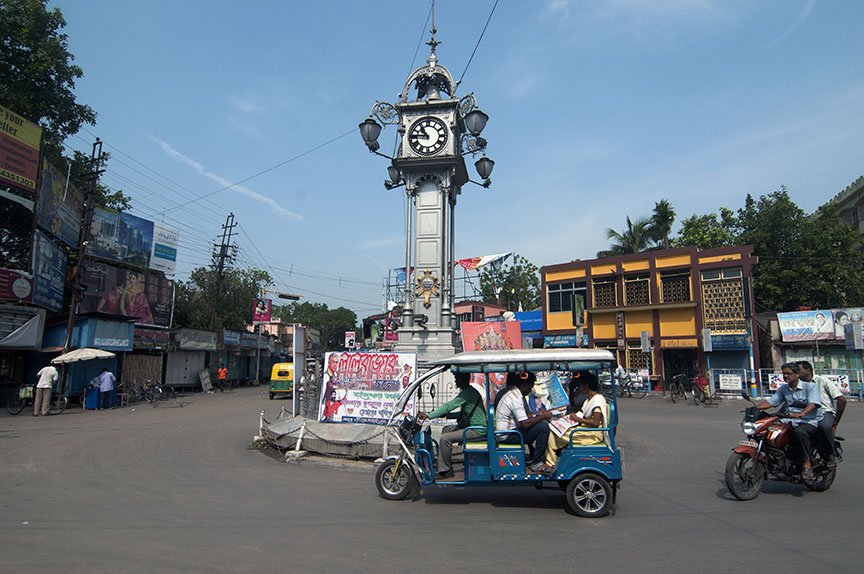
Book You Stay in Hooghly, West Bengal, India
Search, compare and book hotels & rentals at the best prices from a variety of sites including Booking.com, Hotels.com, Expedia, Vrbo and more. You can move the map to search for accommodations in other areas and also use the filter to find restaurants, purchase tickets for tours and attractions and locate interesting points of interest!

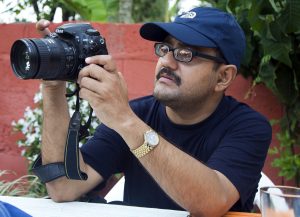
Sugato Mukherjee is a photographer and writer based in Calcutta with bylines in The Globe and Mail, Al Jazeera, Deutsche Welle, Nat Geo Traveller, Atlas Obscura and Discovery, among others. While documenting humanitarian stories remains his priority, he equally loves to explore new destinations and write about them. Sugato’s coffee table book on Ladakh has been published from Delhi, and his work on sulphur miners of East Java has been awarded by UNESCO.